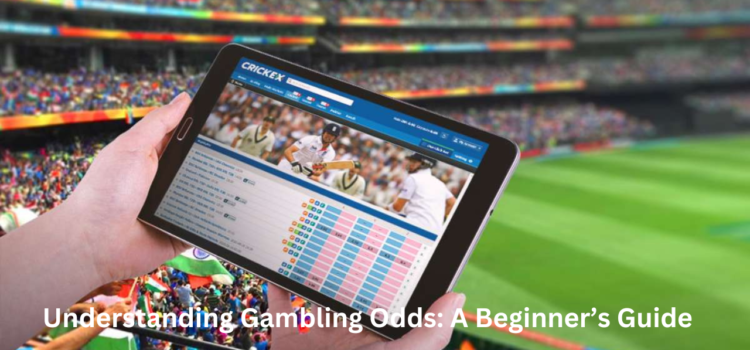Learning how to read and comprehend gambling odds is key to becoming a more informed and strategic bettor. This in-depth guide breaks down everything from fractional, decimal, and moneyline odds to probability, payouts, and implied probability. Gain the betting knowledge needed to make smarter wagers.
The world of gambling features a vast array of odds and probabilities that can seem overwhelming to new bettors. However, being able to properly read and understand the various formats of odds is critical for anyone looking to elevate their expressbets.
In this comprehensive beginner’s guide, we’ll explore the ins and outs of gambling odds, including:
- What odds represent from a probability standpoint
- Key differences between fractional, decimal, and moneyline odds
- How to calculate your potential payouts
- Implied probability and why it matters
- Practical examples of converting between formats
- Tips for comparing odds between sportsbooks
Follow along as we demystify the odds and give you the base of knowledge required to analyze lines and make informed wagers across every major sport.
What Do Odds Represent?
Before diving into specifics, it’s important to understand what odds broadly represent from a probability perspective.
Gambling odds reflect the implied probability or likelihood of a particular outcome occurring in a betting market. They also dictate the potential return you stand to receive on a given wager.
For instance, let’s look at odds for the following binary market:
- Will the coin flip land on heads?
- Yes: +250
- No: -400
The odds on each outcome imply a certain probability while also showing the payout you would get by betting $100.
The +250 odds on heads equate to heads having a 28.6% chance of happening. If you bet heads and win, you profit $250 on a $100 wager.
Meanwhile, the -400 odds on tails work out to an 80% implied probability. A winning $100 bet would return you your stake plus $25 in profit.
As you can see, odds convey critical information. Next, we’ll explore the main formats.
Key Odds Formats: Fractional, Decimal, Moneyline
There are three major formats sportsbooks use to convey odds and payout info:
Fractional Odds
Fractional odds represent the amount you stand to profit on a winning bet relative to your stake. The number before the slash is the return on top of your original wager.
For example, odds of 5/1 mean for every $1 staked, you profit $5. A $10 bet at 5/1 returns $60 (50 profit + 10 original stake).
Decimal Odds
Decimal format displays your total return from a winning bet including your original stake. Anything above 1.00 indicates how much you receive for every $1 wagered.
If the odds are 2.40, a $50 bet returns $120 (50 * 2.40). Decimal odds don’t state potential profit separately.
Moneyline Odds
Moneyline or American odds have two options: positive and negative numbers.
Positive numbers show potential profit on a $100 bet. +150 means a $100 bet returns $250 with a $150 profit.
Negative numbers indicate how much you must bet to win $100. -200 requires a $200 stake, which would return $300 with the initial $200 investment.
Converting Between Formats
The different displays can cause confusion, but you’ll soon realize they all aim to convey the same key details. Here are some examples of converting between the formats:
- Fractional → Decimal
- 5/2 = (5/2 + 1) = 3.5
- Decimal → Fractional
- 40 = (2.40 – 1) = 1.4/1
- Negative Moneyline → Fractional
- -400 = 1 / (100/400 + 1) = 1/5
- Positive Moneyline → Decimal
- +250 = (250/100) + 1 = 3.5
Practice translating between each format. It will deepen your overall understanding of odds and probabilities.
Calculating Payouts on Bets
One other critical skill is using odds to calculate potential payouts across the betting markets and formats you may encounter.
Let’s take an example fractional line and do the math:
New York Giants vs Washington Football Team
- Giants: 5/2
- Washington: 4/9
On a $50 bet, here is how you determine your returns:
Giants at 5/2
- Convert 5/2 to decimal = 3.5
- If decimal odds are 3.5, we profit $2.5 for every $1 bet
- On a $50 bet, $50 * 3.5 = $175
- We get our $50 stake back plus $125 profit
Washington at 4/9
- Convert 4/9 to decimal = 1.444
- On a $50 bet, 50 * 1.444 = $72.22
- We get back our $50 plus $22.22 profit
You can apply similar logic to moneyline odds. These examples illustrate why comprehension of odds formats is so vital—they directly impact how much you stand to gain or lose.
Understanding Implied Probability
Up to this point, we’ve discussed how odds represent the potential payouts tied to certain outcomes. But at their core, odds are derived from the implied probability sportsbooks assign to each side of a betting market.
Implied probability measures the percentage chance books think an outcome will happen. Decimal odds can be easily converted:
Implied Probability Formula
- Probability % = 1 / (Decimal Odds) x 100
So odds of +250 (3.5) equate to a 28.6% chance:
- 1/(3.5) = 0.286
- 286 x 100 = 28.6%
While odds of -110 (1.91) give an implied probability of 52.4%:
- 1/1.91 = 0.524
- 524 x 100 = 52.4%
Understanding probability is hugely beneficial when comparing odds between books to find the best values.
Comparing Odds & Finding Overrounds
Implied probability empowers you to spot discrepancies across sportsbooks. Consider the following moneyline odds for an NFL game:
- Book A: Patriots -105 / Eagles -115
- Book B: Patriots -110 / Eagles -110
Converting these to implied probability, Book A gives:
- Patriots: 51.2%
- Eagles: 53.3%
Meanwhile, Book B has:
- Patriots: 52.4%
- Eagles: 52.4%
The probabilities at Book B are more evenly distributed compared to Book A. This signals better overall value.
You can also add up each side’s implied probability to check for overrounds, which indicate how much vigorish (commission) books charge. Anything over 100% means extra juice:
- Book A: 51.2% + 53.3% = 104.5% → 4.5% overround
- Book B: 52.4% + 52.4% = 104.8% → 4.8% overround
Consider odds with lower overrounds to maximize potential payouts.
Final Tips for Reading Odds
With so much money at stake, gaining a strong grasp of odds is no trivial matter:
- Know the differences between formats and how to convert between them. Fractional and decimal odds focus on potential returns, while moneylines highlight the risk/reward ratio.
- Calculate expected payouts by applying the odds to your bet amount. Odds directly impact what you stand to make or lose.
- Learn to determine implied probability; this allows you to compare odds quality across books.
- Scan for probability overrounds to locate better market prices.
- If anything is unclear, don’t hesitate to ask the sportsbook staff. Never bet on odds you don’t fully comprehend.
Gambling odds represent probabilities, potential profits, risk factors, and the house edge. Understanding those core elements leads to better betting choices.
Hopefully this beginner’s overview has provided a way to make sense of those critical numbers and given you a skillset to thrive in the sports betting realm. Thanks for reading and best of luck with your wagers!






